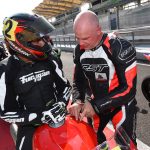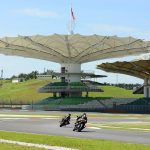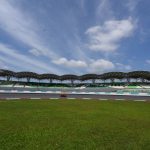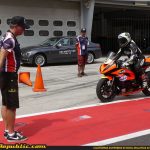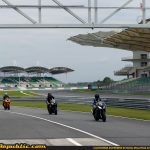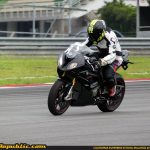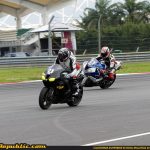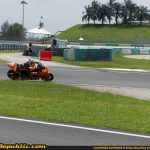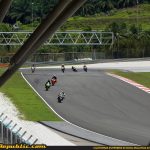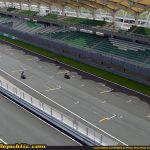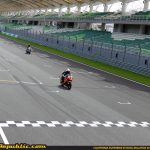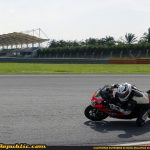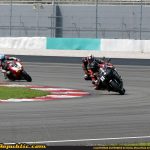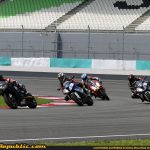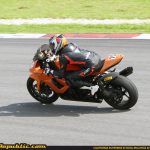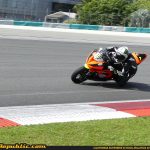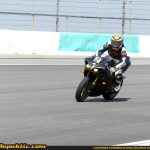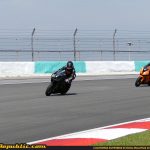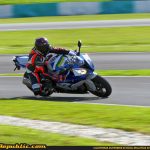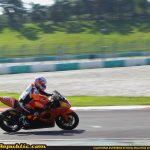- The CSS is one of the oldest motorcycle riding schools in the world.
- The coaches are certified and teach you everything they learn from the founder of the CSS – Keith Code.
- Courses span two days and you learn 10 drills that improve your riding.
- Our editor claims that his riding has improved by at least 50% after attending the CSS.
- But ended up falling down at turn two and the end of the second day, read that story here.
Learning never stops and if you stop learning, it likely means you’re dead. I can’t remember who said that, but it is the cold hard fact about life and everything that goes with it, including riding a motorcycle.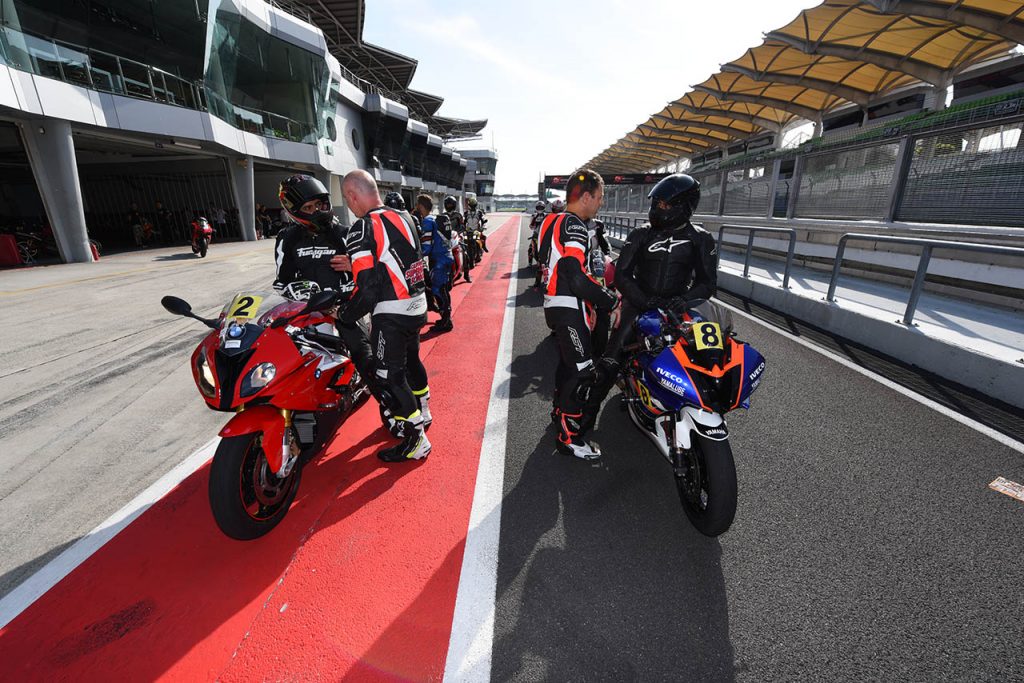 No matter what sport or activity it is, even the world’s best will end up getting schooled eventually. Remember Valentino Rossi at his peak? He was the greatest. Everyone thought he was the best of all time and no one would ever race a motorcycle better than him. Then came Lorenzo with his Spanish aggression and pulled the World Championship rug right under Rossi’s feet. Not too long after came Marc Marquez with his elbow scrapping style and showed the seasoned veterans how primitive they were.
No matter what sport or activity it is, even the world’s best will end up getting schooled eventually. Remember Valentino Rossi at his peak? He was the greatest. Everyone thought he was the best of all time and no one would ever race a motorcycle better than him. Then came Lorenzo with his Spanish aggression and pulled the World Championship rug right under Rossi’s feet. Not too long after came Marc Marquez with his elbow scrapping style and showed the seasoned veterans how primitive they were.
 But fact is, even though Marquez is one of the all time greats, in due time, another rider who is perhaps just a couple of years old now, will someday make his debut and show us the impossible. Rossi? A spent force some say.
But fact is, even though Marquez is one of the all time greats, in due time, another rider who is perhaps just a couple of years old now, will someday make his debut and show us the impossible. Rossi? A spent force some say.
 Learning never stops, and if you think you know it all then chances are you know nothing. And for motorcycle riders, that’s why riding schools like the California Superbike School exist – to coach us and to teach us the collective knowledge of years and years worth of coaching tens of thousands of students all over the world. It is the go to source of knowledge for bikers. The al-Qarawiyyin for our kind.
Learning never stops, and if you think you know it all then chances are you know nothing. And for motorcycle riders, that’s why riding schools like the California Superbike School exist – to coach us and to teach us the collective knowledge of years and years worth of coaching tens of thousands of students all over the world. It is the go to source of knowledge for bikers. The al-Qarawiyyin for our kind.
 The California Superbike School (CSS) was established by a guy named Keith Code who started training riders back in 1976. An accomplished racer and a self described researcher, writer and educator, Keith’s CSS runs all 12 months of a year all around the globe, including Malaysia just recently.
The California Superbike School (CSS) was established by a guy named Keith Code who started training riders back in 1976. An accomplished racer and a self described researcher, writer and educator, Keith’s CSS runs all 12 months of a year all around the globe, including Malaysia just recently.
 It wasn’t the first time the CSS has been in Malaysia. The school has been offered here since the early 2000s but the last time it was here was back in 2006. So back again after 11 years, Bikes Republic was invited to attend the school by BMW Motorrad Malaysia – the sponsor for the school.
It wasn’t the first time the CSS has been in Malaysia. The school has been offered here since the early 2000s but the last time it was here was back in 2006. So back again after 11 years, Bikes Republic was invited to attend the school by BMW Motorrad Malaysia – the sponsor for the school.
 From the moment you reach Sepang International Circuit, ground zero for the school, to the point you leave, everything flows smoothly and there is a proper system to disseminate all that information.
From the moment you reach Sepang International Circuit, ground zero for the school, to the point you leave, everything flows smoothly and there is a proper system to disseminate all that information.
The day starts at 730am on both Saturday and Sunday with a collective brief for everyone before you are disbursed into your own group. There’s a group for level one and level two riders, and another group for the more advanced level three and four.
 There is a total of four levels to go through to officially graduate the CSS. But no matter how experienced you are or how many championships you have won, if you want to be coached by the CSS, you always have to begin from level one. We were signed up for level one and two which took place over the course of two days.
There is a total of four levels to go through to officially graduate the CSS. But no matter how experienced you are or how many championships you have won, if you want to be coached by the CSS, you always have to begin from level one. We were signed up for level one and two which took place over the course of two days.
 Level one and two starts with a classroom session, and that’s where they teach you the drills for about 20 minutes before letting you out on the bike for another 20 minutes to practise what you just learnt.
Level one and two starts with a classroom session, and that’s where they teach you the drills for about 20 minutes before letting you out on the bike for another 20 minutes to practise what you just learnt.
 For the track practise sessions, BMW Motorrad provided us the ballistic new S1000RR to test our new found knowledge on. But despite all that superb electronics designed to keep you safe, a manic engine and trick suspension, we were kept in check by the constant shadow of the on-track instructors who follow you from behind to watch your riding style. After watching you ride, they will then overtake you, tap the back of their bikes with their hands to indicate to you to follow them, and will then proceed to show you how to do it right. So to test the full potential of the S1000RR, one of the greatest superbikes ever, we could not.
For the track practise sessions, BMW Motorrad provided us the ballistic new S1000RR to test our new found knowledge on. But despite all that superb electronics designed to keep you safe, a manic engine and trick suspension, we were kept in check by the constant shadow of the on-track instructors who follow you from behind to watch your riding style. After watching you ride, they will then overtake you, tap the back of their bikes with their hands to indicate to you to follow them, and will then proceed to show you how to do it right. So to test the full potential of the S1000RR, one of the greatest superbikes ever, we could not.
 The first drill of the day in level one was Throttle Control, and the golden rule from this drill is smooth throttle inputs, always. You cannot expect a bike to do two things at once, you can either make it turn a corner, or you can make it go faster by giving it more gas. But to ask it to do two things at once is trouble. Unless of course you are smooth and consistent with your throttle. Turn One of Sepang Circuit for example requires you to brake heavy after the long straight, then turn into the corner. And only once the bike is settled in do you gently get on the throttle, hold it in place, and give it the full squeeze treatment once the bike is upright. Gentle throttle control will get you through any corner just fine, as we found it.
The first drill of the day in level one was Throttle Control, and the golden rule from this drill is smooth throttle inputs, always. You cannot expect a bike to do two things at once, you can either make it turn a corner, or you can make it go faster by giving it more gas. But to ask it to do two things at once is trouble. Unless of course you are smooth and consistent with your throttle. Turn One of Sepang Circuit for example requires you to brake heavy after the long straight, then turn into the corner. And only once the bike is settled in do you gently get on the throttle, hold it in place, and give it the full squeeze treatment once the bike is upright. Gentle throttle control will get you through any corner just fine, as we found it.
 Drill two is mastering the Turn Points and the correct lines around corners. This is important to understand the entry and exit points of a corner. It is generally understood that all riders have their own riding style and the turning points of a corner varies from rider to rider. But there are three attributes that describe the ‘good line’ of a corner – 1) Good Throttle Control. 2) One Steering Input because too many inputs upsets the balance of the bike. 3) Straighten the bike as quickly as you can to be able to get on the gas early and explode out of the corner with as much speed and traction available. These are the basics of every corner, no matter what your Turn Point is.
Drill two is mastering the Turn Points and the correct lines around corners. This is important to understand the entry and exit points of a corner. It is generally understood that all riders have their own riding style and the turning points of a corner varies from rider to rider. But there are three attributes that describe the ‘good line’ of a corner – 1) Good Throttle Control. 2) One Steering Input because too many inputs upsets the balance of the bike. 3) Straighten the bike as quickly as you can to be able to get on the gas early and explode out of the corner with as much speed and traction available. These are the basics of every corner, no matter what your Turn Point is.
 The third drill is Quick Steer, and this is where they explain how your bike has two basic functions – changing speed and changing direction. The trick is to get comfortable with your bike and minimise the amount of weight you have on the handle bars. This is of course done by pushing your butt right back against the seat, and pushing your calf up by the balls of your feet to clip your thighs to the tank. Your torso then takes on the task of resisting the braking and cornering forces. By keeping weight away from the handle bar and the front tyre you are allowing the front of the bike to be as natural as it was designed to be, and that means you can better steer with minimal counter steering. And if you are wondering why you would need to counter steer on a bike, simple, because that is how a bike turns – push on the left handle bar to turn right and push on the right handle bar to turn left. So if you need to perform a Quick Steer maneuver, then the trick is to simply push harder at either end of the bar and this forces the bike to change directions quicker. Handy in fast switchback corners or when avoiding something on the road.
The third drill is Quick Steer, and this is where they explain how your bike has two basic functions – changing speed and changing direction. The trick is to get comfortable with your bike and minimise the amount of weight you have on the handle bars. This is of course done by pushing your butt right back against the seat, and pushing your calf up by the balls of your feet to clip your thighs to the tank. Your torso then takes on the task of resisting the braking and cornering forces. By keeping weight away from the handle bar and the front tyre you are allowing the front of the bike to be as natural as it was designed to be, and that means you can better steer with minimal counter steering. And if you are wondering why you would need to counter steer on a bike, simple, because that is how a bike turns – push on the left handle bar to turn right and push on the right handle bar to turn left. So if you need to perform a Quick Steer maneuver, then the trick is to simply push harder at either end of the bar and this forces the bike to change directions quicker. Handy in fast switchback corners or when avoiding something on the road.
 Mind you we had 20 minutes to practice everything after each tutorial. And usage of the track was limited to only the north track of the Sepang Circuit.
Mind you we had 20 minutes to practice everything after each tutorial. And usage of the track was limited to only the north track of the Sepang Circuit.
The final two drills of level one are Rider Input which teaches you that the less busy you are on a bike, the better it performs. So minimise all your squirming around in the saddle and the bike will perform as it is supposed to, and the less tense you are on the bike the easier it is to steer it. The final drill is Two Step Turning. This is where your eyes play the most important role simply because you, whether you notice it or not, unknowingly steer where your eyes are looking. Ever heard of Target Fixation? It is the most dangerous thing a biker can do and you can read about it by clicking here.
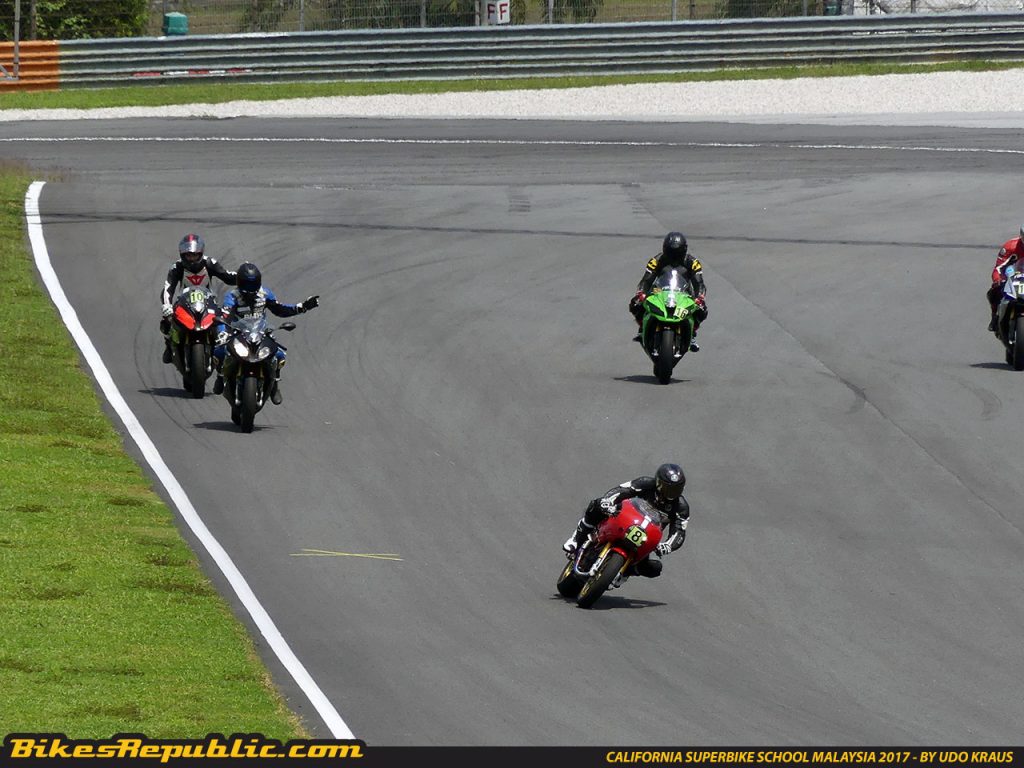 So by training your eyes to look at the Turning Point of a corner, you subconsciously point the bike towards it and turn when you reach it. And as soon as you locate the Turning Point, you need to look out for the next point you want to be. The idea here is to keep your bike steering to the first Turning Point, while your eyes are already searching for the second point. This takes practise and is not that easy, but once you learn to detach your sight from where the bike points to, your riding somehow becomes smoother and predictable.
So by training your eyes to look at the Turning Point of a corner, you subconsciously point the bike towards it and turn when you reach it. And as soon as you locate the Turning Point, you need to look out for the next point you want to be. The idea here is to keep your bike steering to the first Turning Point, while your eyes are already searching for the second point. This takes practise and is not that easy, but once you learn to detach your sight from where the bike points to, your riding somehow becomes smoother and predictable.
 Level two of the CSS took place the next day with the same morning route – a collective brief for all groups, and then tutorials for those who had finished level one the day before and have returned to study level two.
Level two of the CSS took place the next day with the same morning route – a collective brief for all groups, and then tutorials for those who had finished level one the day before and have returned to study level two.
At this level, the drills changes from understanding your bike to using the environment around you to your advantage.
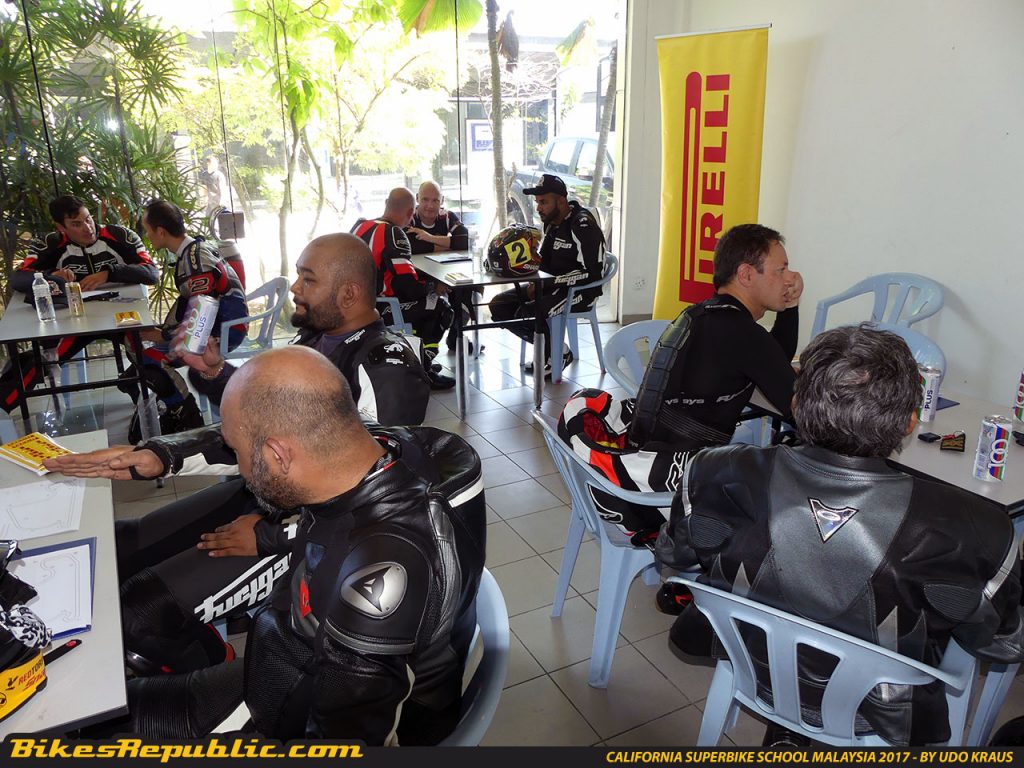 Reference Points was the first drill and it basically means to use a visual cue to mark the beginning of an action, like using one of the many marshall posts which are located around the circuit to mark braking or accelerating points. It provides a smooth flow of information through your eyes and helps you overcome target fixation as you consciously look for reference points around the circuit.
Reference Points was the first drill and it basically means to use a visual cue to mark the beginning of an action, like using one of the many marshall posts which are located around the circuit to mark braking or accelerating points. It provides a smooth flow of information through your eyes and helps you overcome target fixation as you consciously look for reference points around the circuit.
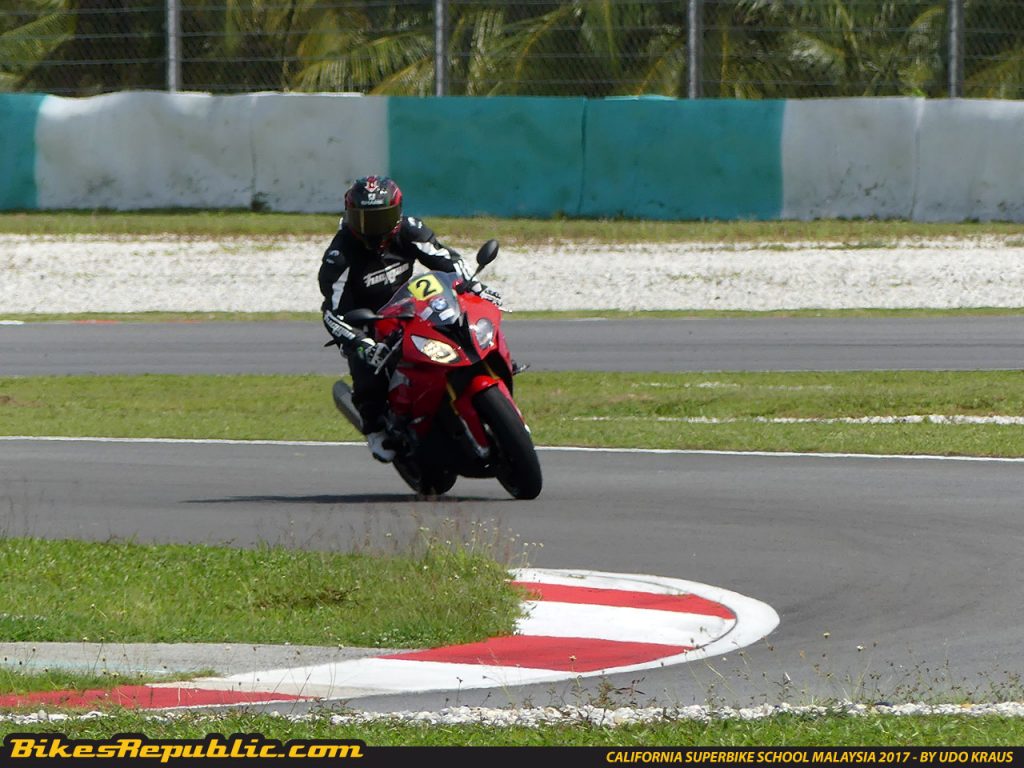 For example, I personally found the end of the curb at turn five the ideal point to pick the bike back up and aim towards the inside of turn five so I clip the apex just right. That’s how reference points work, it has a value to it, you just need to decide what that value is. That value may be braking, accelerating or cornering. We were told that there are generally three or four reference points per corner, one point that tells you when to roll of the throttle, another point tells you to brake, another to corner and the last one tells you to go full squirt.
For example, I personally found the end of the curb at turn five the ideal point to pick the bike back up and aim towards the inside of turn five so I clip the apex just right. That’s how reference points work, it has a value to it, you just need to decide what that value is. That value may be braking, accelerating or cornering. We were told that there are generally three or four reference points per corner, one point that tells you when to roll of the throttle, another point tells you to brake, another to corner and the last one tells you to go full squirt.
 One drill that really opened my eyes and improved my track riding was Change Lines. This drill encourages you to try different lines around the circuit. After years of riding on the same track we usually get stuck to the same old points to brake, steer and accelerate, but this drill wants you to try different braking points, corner entry points and accelerate points. You will be surprised at how well some other lines work than what you are used to, but of course there are some that end up being really bad too.
One drill that really opened my eyes and improved my track riding was Change Lines. This drill encourages you to try different lines around the circuit. After years of riding on the same track we usually get stuck to the same old points to brake, steer and accelerate, but this drill wants you to try different braking points, corner entry points and accelerate points. You will be surprised at how well some other lines work than what you are used to, but of course there are some that end up being really bad too.
 The second drill of the second day was called Three Step, and it is an evolution of the Two Step drill we learned back in level one. In the two step drill we are thought to look for two points – a braking point and a entry point. In Three Step, the aim is to look for a point to brake, another point in the middle of the corner representing the ideal point to place the bike in for a neat exit, and the third is of course where you want to be when you exit the corner.
The second drill of the second day was called Three Step, and it is an evolution of the Two Step drill we learned back in level one. In the two step drill we are thought to look for two points – a braking point and a entry point. In Three Step, the aim is to look for a point to brake, another point in the middle of the corner representing the ideal point to place the bike in for a neat exit, and the third is of course where you want to be when you exit the corner.
 The third drill is the ultimate solution to target fixation, it is called Wide Screen View of Track. The objective of this drill is to look at everything ahead of you rather than at just a single point. By looking at what lies around you, you better understand threats and dangers, and with practice, you will be able to recognise and avoid situations before they even happen. This is a tricky skill to master as it involves training the eye to look past what it would normally look at, but with time and practise, the Wide Screen View will help your riding. There is just one golden rule here, speed narrows down your Wide View and that is no good on road and track. So practice practice practice.
The third drill is the ultimate solution to target fixation, it is called Wide Screen View of Track. The objective of this drill is to look at everything ahead of you rather than at just a single point. By looking at what lies around you, you better understand threats and dangers, and with practice, you will be able to recognise and avoid situations before they even happen. This is a tricky skill to master as it involves training the eye to look past what it would normally look at, but with time and practise, the Wide Screen View will help your riding. There is just one golden rule here, speed narrows down your Wide View and that is no good on road and track. So practice practice practice.
 The final drill of the day is called Pick Up. Ever noticed how MotoGP riders will sometimes pick up their bikes while they are still hanging off in a fast corner? There are a few reasons why they do that. One of it is speed, because the faster you get your bike upright the quicker you are able to get on the throttle. A bike that is upright creates more drive than a bike which is still in a corner. Then there is the need for traction, especially in the wet or slippery corners. The Pick Up also helps with correcting a slide. But in a competitive race, the Pick Up is important because it helps manage tyre wear. Obviously a tyre wears down more quickly when it is managing a corner and trying to create grip to lay down more power, so naturally a tyre will be less prone to wear when it is upright. So there you have it, try to Pick Up your bike as soon as you can, and you can do this by managing your upper body. Keep your upper body in the turn, and simply use your hands to counter steer the handle bars to pick the bike back up. That’s the best way to do it.
The final drill of the day is called Pick Up. Ever noticed how MotoGP riders will sometimes pick up their bikes while they are still hanging off in a fast corner? There are a few reasons why they do that. One of it is speed, because the faster you get your bike upright the quicker you are able to get on the throttle. A bike that is upright creates more drive than a bike which is still in a corner. Then there is the need for traction, especially in the wet or slippery corners. The Pick Up also helps with correcting a slide. But in a competitive race, the Pick Up is important because it helps manage tyre wear. Obviously a tyre wears down more quickly when it is managing a corner and trying to create grip to lay down more power, so naturally a tyre will be less prone to wear when it is upright. So there you have it, try to Pick Up your bike as soon as you can, and you can do this by managing your upper body. Keep your upper body in the turn, and simply use your hands to counter steer the handle bars to pick the bike back up. That’s the best way to do it.
 So that’s that then, a total of 10 drills to learn over two days and two levels. The next time we attend the CSS it will be on to level three and four. But in all honesty, I would personally prefer to attend level one and two all over again simply because there is so much knowledge passed down that I would like to spend more time learning it and perfecting it before attending the following two levels. The knowledge is precious to say the least and the coaches are so good at what they do that you can’t resist but give them a tight hug at the end of it all. I did have a minor fall at the end of day two, but that’s a different story which you can read about here.
So that’s that then, a total of 10 drills to learn over two days and two levels. The next time we attend the CSS it will be on to level three and four. But in all honesty, I would personally prefer to attend level one and two all over again simply because there is so much knowledge passed down that I would like to spend more time learning it and perfecting it before attending the following two levels. The knowledge is precious to say the least and the coaches are so good at what they do that you can’t resist but give them a tight hug at the end of it all. I did have a minor fall at the end of day two, but that’s a different story which you can read about here.
 Not all of these coaches are racers, but not all racers make good coaches, just a few of them, but all of them understand the techniques thought in the CSS and deliver it the way Keith Code wanted it to. The aim is to create better riders and Steve Braugey, one of the main coaches at the CSS said it best, “we improve human beings, we just happen to do it with motorcycles.”
Not all of these coaches are racers, but not all racers make good coaches, just a few of them, but all of them understand the techniques thought in the CSS and deliver it the way Keith Code wanted it to. The aim is to create better riders and Steve Braugey, one of the main coaches at the CSS said it best, “we improve human beings, we just happen to do it with motorcycles.”
 A special thank you goes out to BMW Motorrad Malaysia for inviting us to attend the CSS, it was a dream come true. The BMW S1000RR was perfect throughout the practice sessions and never put a wheel wrong. The onboard electronics and rider aids truly make you feel like a hero. At RM104,900, it is arguably the best and most advanced sports bike you could buy, and financing it is easy with BMW Credit which lets you own the bike for as low as RM1,395 a month. Click here for more information on the BMW S1000RR.
A special thank you goes out to BMW Motorrad Malaysia for inviting us to attend the CSS, it was a dream come true. The BMW S1000RR was perfect throughout the practice sessions and never put a wheel wrong. The onboard electronics and rider aids truly make you feel like a hero. At RM104,900, it is arguably the best and most advanced sports bike you could buy, and financing it is easy with BMW Credit which lets you own the bike for as low as RM1,395 a month. Click here for more information on the BMW S1000RR.






